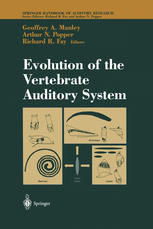

Most ebook files are in PDF format, so you can easily read them using various software such as Foxit Reader or directly on the Google Chrome browser.
Some ebook files are released by publishers in other formats such as .awz, .mobi, .epub, .fb2, etc. You may need to install specific software to read these formats on mobile/PC, such as Calibre.
Please read the tutorial at this link: https://ebookbell.com/faq
We offer FREE conversion to the popular formats you request; however, this may take some time. Therefore, right after payment, please email us, and we will try to provide the service as quickly as possible.
For some exceptional file formats or broken links (if any), please refrain from opening any disputes. Instead, email us first, and we will try to assist within a maximum of 6 hours.
EbookBell Team

4.7
86 reviewsThe function of vertebrate hearing is served by a surprising variety of sensory structures in the different groups of fish, amphibians, reptiles, birds, and mammals. This book discusses the origin, specialization, and functional properties of sensory hair cells, beginning with environmental constraints on acoustic systems and addressing in detail the evolutionary history behind modern structure and function in the vertebrate ear. Taking a comparative approach, chapters are devoted to each of the vertebrate groups, outlining the transition to land existence and the further parallel and independent adaptations of amniotic groups living in air. The volume explores in depth the specific properties of hair cells that allowed them to become sensitive to sound and capable of analyzing sounds into their respective frequency components. Evolution of the Vertebrate Auditory System is directed to a broad audience of biologists and clinicians, from the level of advanced undergraduate students to professionals interested in learning more about the evolution, structure, and function of the ear.